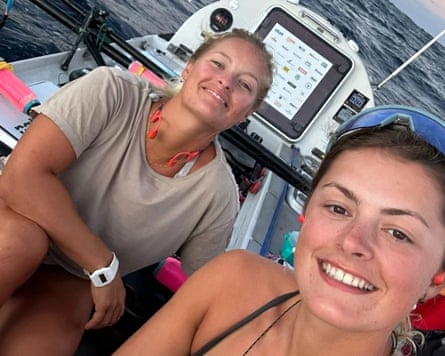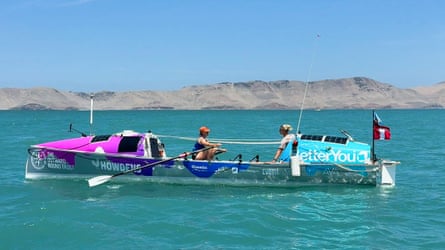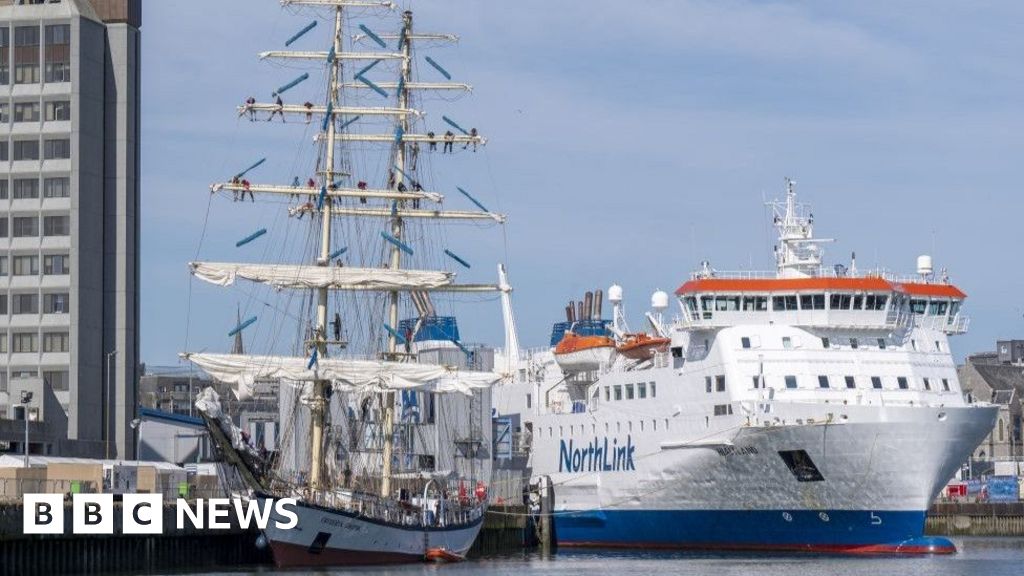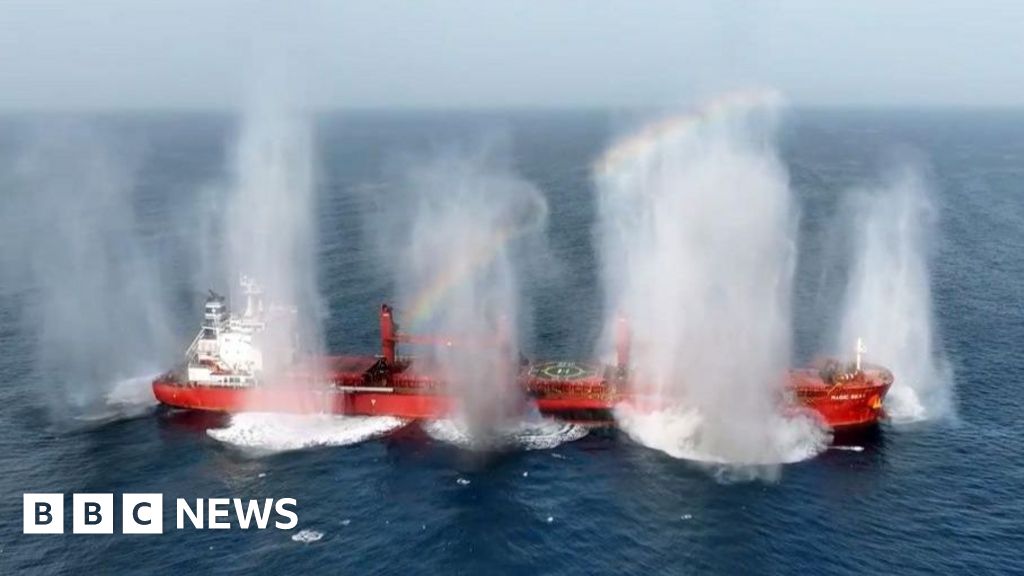Six months in a rowboat in the South Pacific Ocean might sound like a nightmare.
But for British women Jess Rowe, 28, and Miriam Payne, 25, the blisters and salt sores are all just part of the adventure of a lifetime, as they row from South America to Australia in their nine-metre vessel, Velocity.
The aptly named Rowe and Payne are now approaching the finish line, of what has been at times a torturous journey, with the pair expected to soon arrive in the city of Cairns in tropical far north Queensland, between 12 noon and 2pm local time.
“Mother Nature has been utterly brutal at times but ultimately, she let us pass and we have loved our time living at sea,” Rowe and Payne tell the Guardian.
The pair pushed off from Lima, Peru, in May after an initial April attempt was cut short by rudder failure. Since their successful relaunch, they have rowed with calloused hands around the clock, averaging 50 nautical miles daily. By the end of their trip they will have rowed an estimated 8,300 nautical miles (15,300 km) while raising money for the Outward Bound Trust.
Overnight, they switch out every two hours, sleeping in shifts inside their small cabin while the other rows, using lightweight towels for bedding.
Their survival kit includes 400kg of food, 80% of it freeze-dried, “salty” the water desalinator, “dumpy” the loo bucket and, when a critical pipe failed, a pair of cut up underwear for repairs. A supply of leaves and micro greens are also harvested from an onboard growing unit, and occasionally they catch a fish on the line.
From a cramped rowing station (also know as “the office”), they have faced down 30ft waves, navigated shipping lanes and battled storms that silenced their electronics. They have persisted under star-filled skies and had close encounters with sharks, whales, dolphins, turtles, sea lions and birdlife.
The sun is a crucial ally, providing energy via solar panels. A system fault that led to the onboard solar-powered batteries discharging too quickly was a critical challenge.
Nick Rowe, Jess’s dad, says they have to be extremely cautious with power, especially since the electrical systems run their vital water generator.
For much of the journey, the rowers had to switch off most other electronics due to the battery failure, including the chartplotter – a navigation device – and the beacon that alerts passing ships. This turned their rowboat into a “ghost ship,” adding constant manual navigation and lookout to their already exhausting schedule.
Their final approach to Queensland, Australia is proving as challenging as the crossing. Originally bound for Brisbane, stubborn headwinds forced a course change in August.

They are now navigating a new route, requiring guidance from Cairns fisher Alec Dunn, to weave through islands and the Great Barrier Reef.
The pair say they are keen for a “long-awaited pizza” when they arrive at Cairns Marlin Marina, which is expected to be any time between noon and 2pm AEST on Saturday. There, they will face the next physical challenge of regaining their “land legs”.
Buoyed by letters from schoolchildren in their final approach, the duo credit their success to “stubborn determination from start to finish” during their time “spent in the wild in our teeny tiny rowing boat”.
Once settled in Cairns, they want to invite children to visit them in the local marina for tours and hear “tales of the high seas”.
Rowe and Payne are among a small cohort of peopleto have crossed the Pacific in rowing boats, either individually or in teams.

They say they will be setting a new record as the first all-female pair to row across the South Pacific Ocean non-stop and unsupported.
Another group of adventurers took on a similar challenge recently, with a Scottish trio of brothers rowing nonstop from Peru to Cairns, where they arrived in August.
The perilous nature of such journeys was highlighted in March when Lithuanian man Aurimas Mockus attempted a solo 12,000km Pacific Ocean crossing from San Diego and had to be rescued after he was caught in turbulent waters due to Tropical Cyclone Alfred.
There have been other close calls – in 2023 24-year-old Australian Tom Robinson also attempted the feat but was rescued by a cruise ship after his boat capsized. There have also been tragedies – in 2020, the American Paralympic rowing star Angela Madsen died while attempting a solo journey from California to Hawaii.
In 2023, Australian Michelle Lee became the first woman to row solo across the Pacific Ocean non-stop and unsupported, rowing from Mexico to Port Douglas in Queensland.
At the time, Lee told the ABC her journey had been a “privilege”.
“You’re just experiencing and witnessing Mother Nature in all her runway-ready, take-me-as-I-am, natural beauty,” she said.
.png)
 1 day ago
9
1 day ago
9

















































